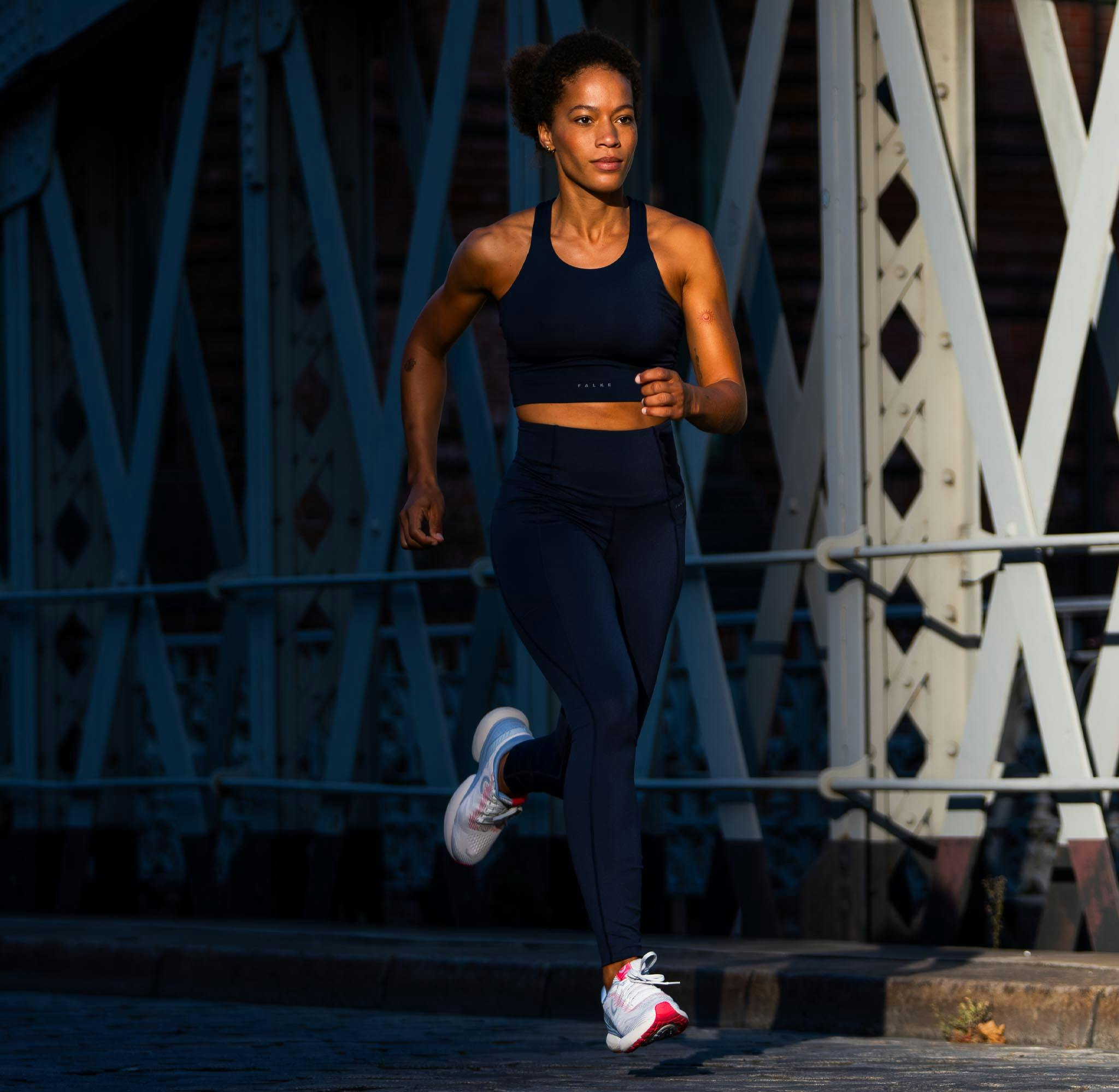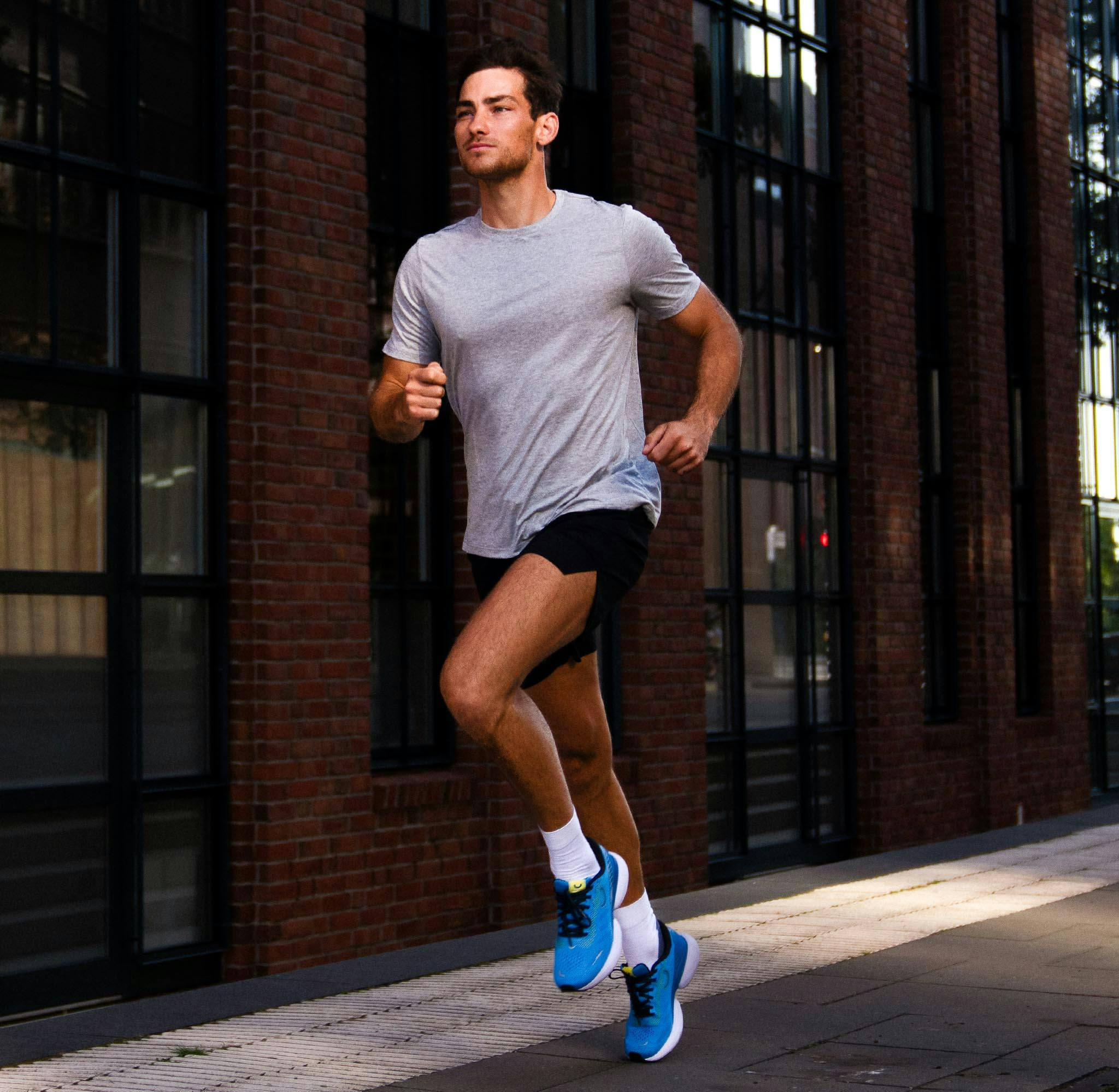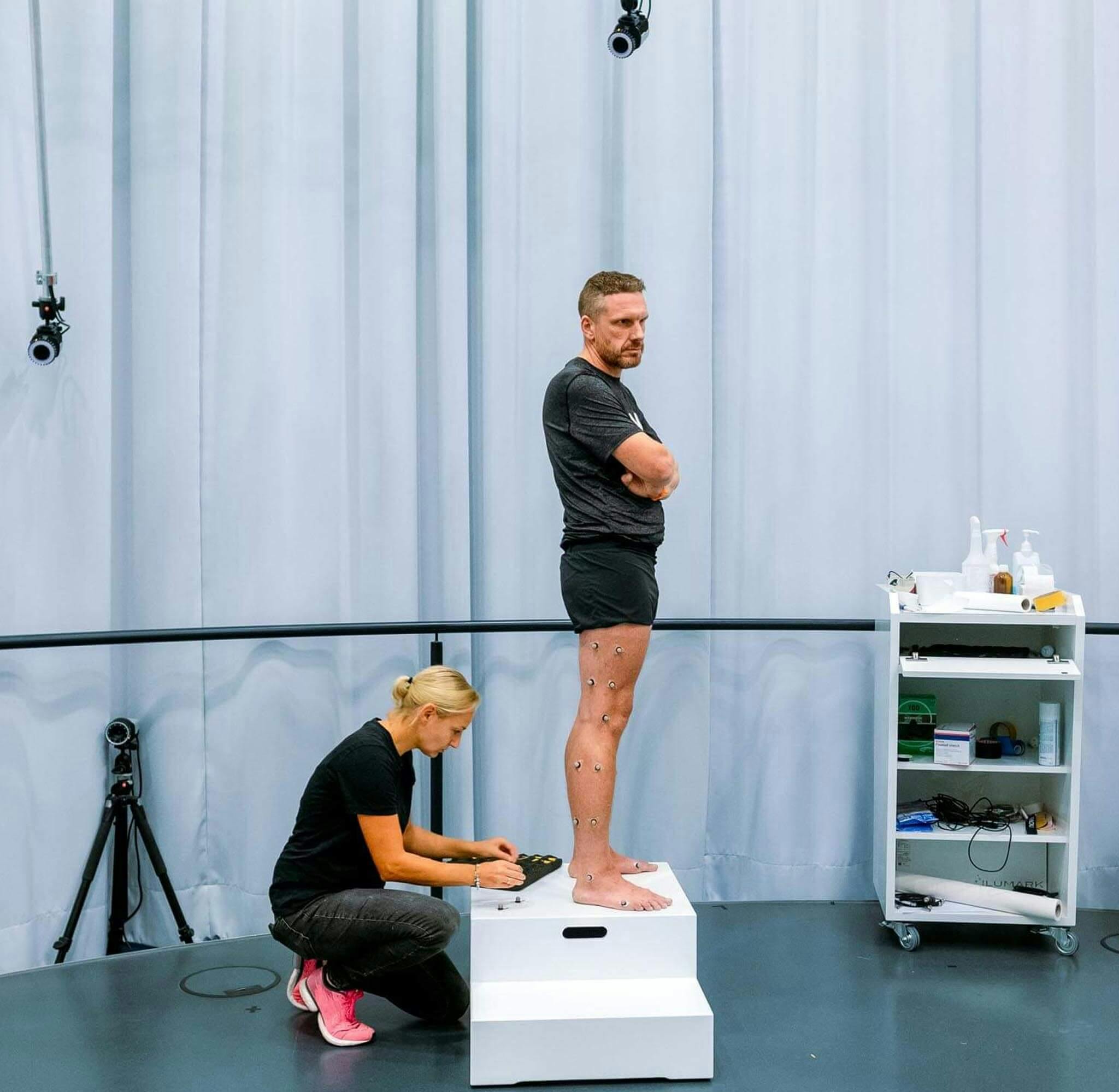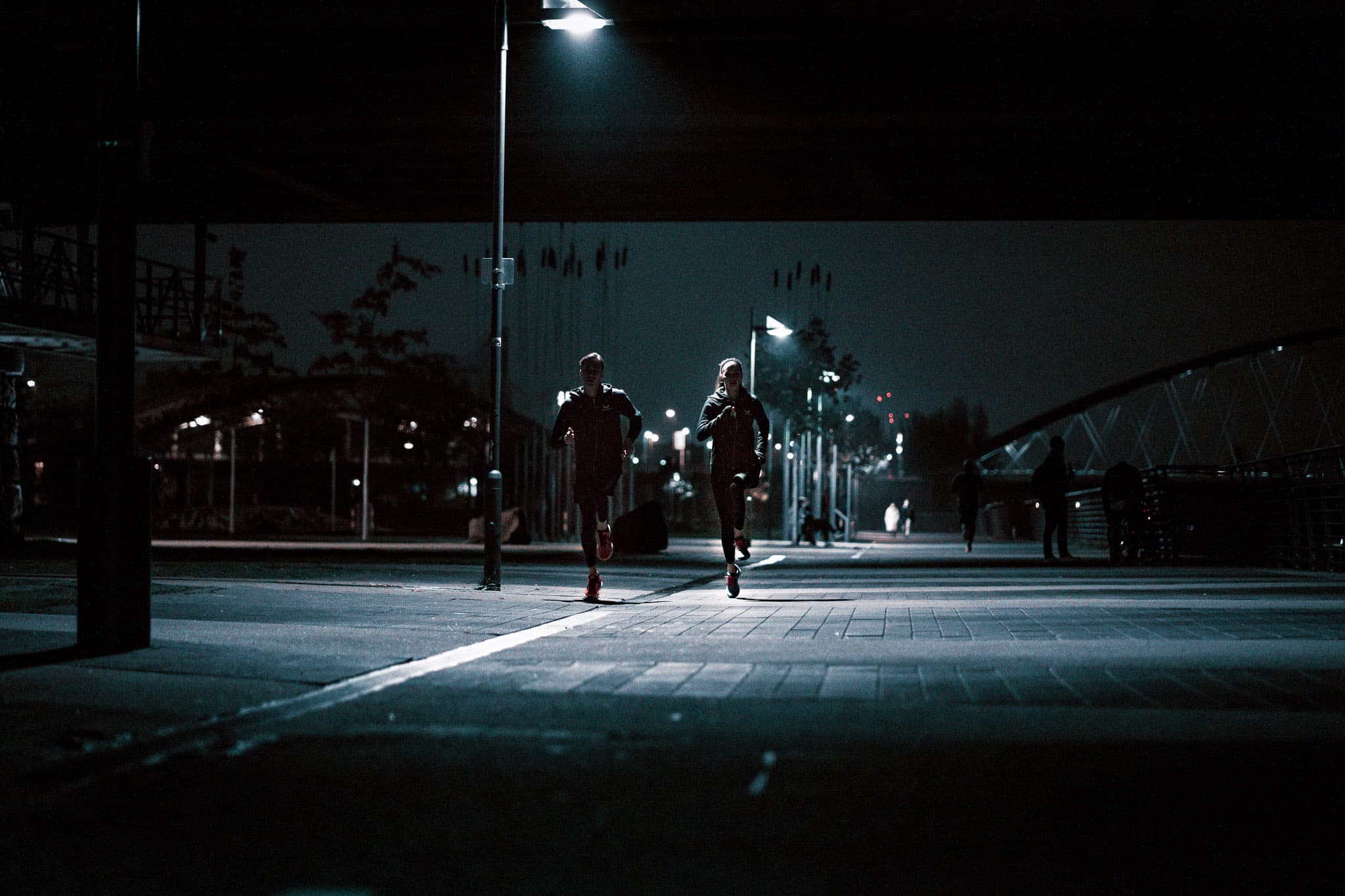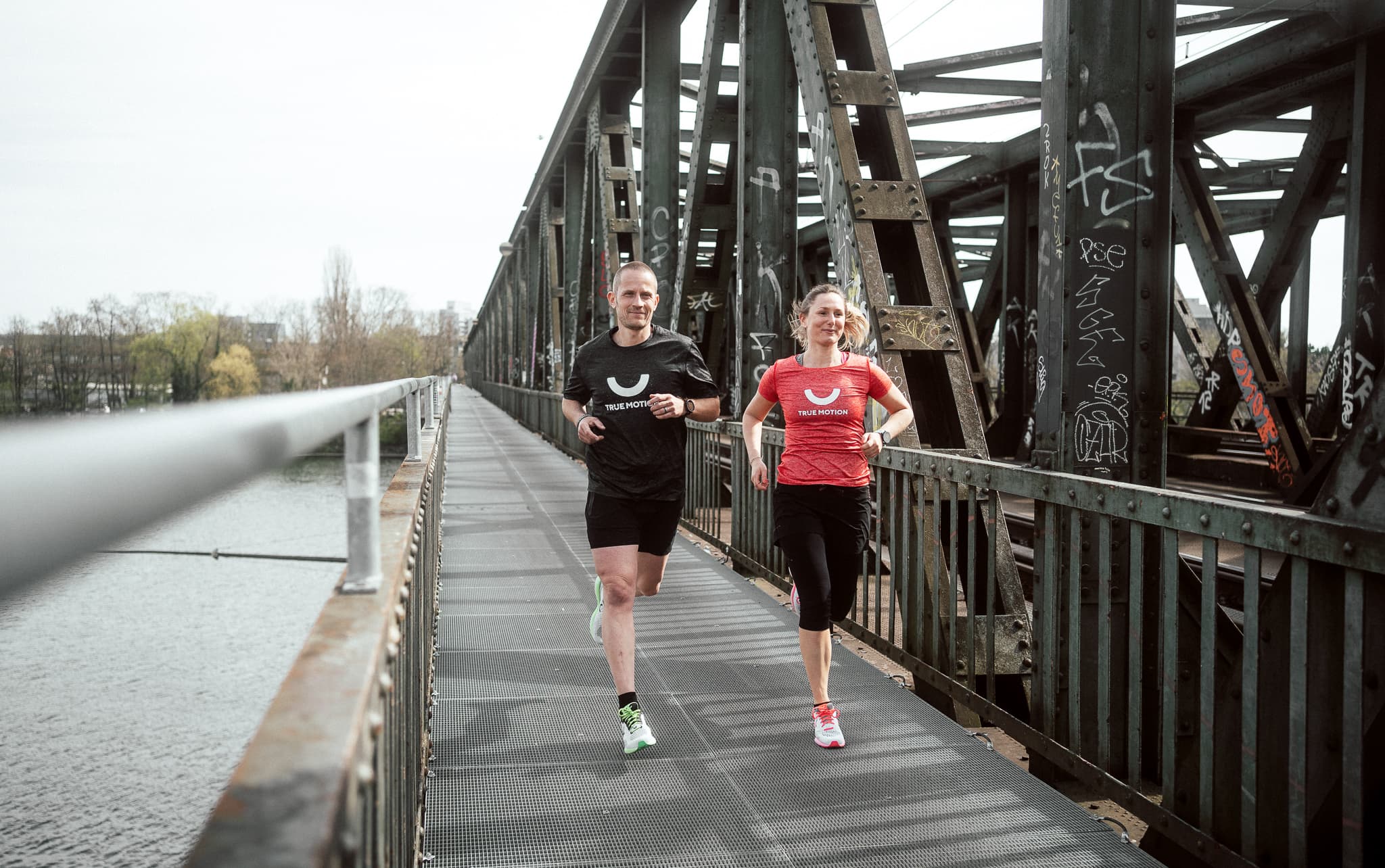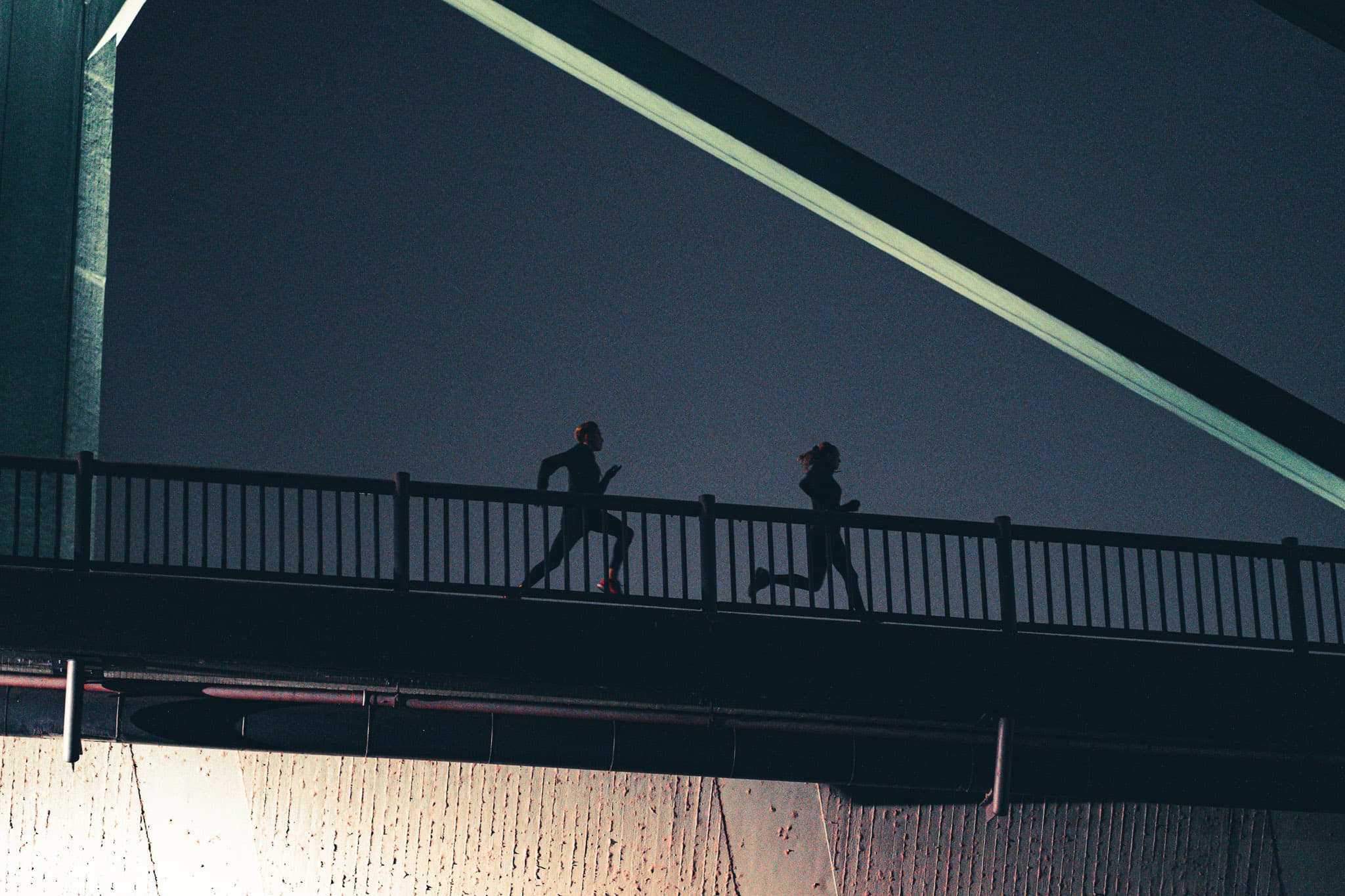
Running in the Dark – How to Run Safely at Night
23rd January 2022
No matter if it’s fall or winter, in the cold season, we often can’t avoid running in the dark. But for many runners, this is a nightmare. Understandably so, since we are not as visible when we run in the dark – and sometimes we can barely see our route, obstacles, and other people around us. However, the right clothing and awareness can help make running in the dark safer. Here are seven tips.
Content:
Tip 1: Wear reflective clothing
Tip 2: Choose the right running shoes
Tip 3: Bring a headlamp and a rear light
Tip 4: Run in a group
Tip 5: Choose an adequate route
Tip 6: Run with foresight
Tip 7: Bring your cell phone for once
"Sometimes there’s just no way to avoid running in the dark," says Eva Hirschhäuser, Tech & Brand Representative at True Motion. Especially between October and March, it’s usually dark at such an early hour that we simply don’t have any daylight left during our after-work running session. If that’s the case, what matters most is our own safety while running. "It’s crucial that we pay attention and that we are prepared – with the right equipment and an adequate route," says the expert.
Tip 1: Wear reflective clothing
When running, the right equipment is crucial. This is even more true when running in the dark. Because bright, glowing clothing in particular makes our running session safer at night. "Anyone who goes running in the dark needs to be visible," says Eva Hirschhäuser. This is important in order to be seen in time by drivers and cyclists. The best way to achieve this is by wearing reflective clothing.
"There are now many running jackets and pants that have integrated reflectors," says Eva Hirschhäuser. However, those who don’t have such jackets and pants in their closet can get by in another way – by using bendable reflective lights and tapes. "We strap these around our arms for the best effect," explains the expert. Another tip: instead of running in black clothes, we should dress as colorfully as possible. This way, we draw attention to ourselves as well.
Tip 2: Choose the right running shoes
Of course, our running shoes are the most important tool for us runners. Especially in the dark, they should not only fit properly – but they should also be reflective, just like the clothing. "Reflective elements on running shoes increase safety," says Eva Hirschhäuser.
To ensure this safety when running in the dark, True Motion running shoes, for example, are equipped with 360° reflectivity. In the U-TECH Nevos, the True Motion U on the back of the shoe is also reflective.
DISCOVER RUNNING SHOES
FROM TRUE MOTION
Tip 3: Bring a headlamp and a rear light
In the dark, many runners rely not only on reflection, but also on active lighting. There’s a good reason for this, as Eva Hirschhäuser explains: "Running safely in the dark depends on two things: being seen and being able to see." On poorly lighted routes in particular, it therefore makes sense to bring our own light sources. The best way to do this is with headlamps.
"There are special headlamps for runners," says Eva Hirschhäuser. These are lighter and the battery is in the strap at the back of the head rather than in the lamp itself. "This ensures better weight distribution and thus a more natural running experience."
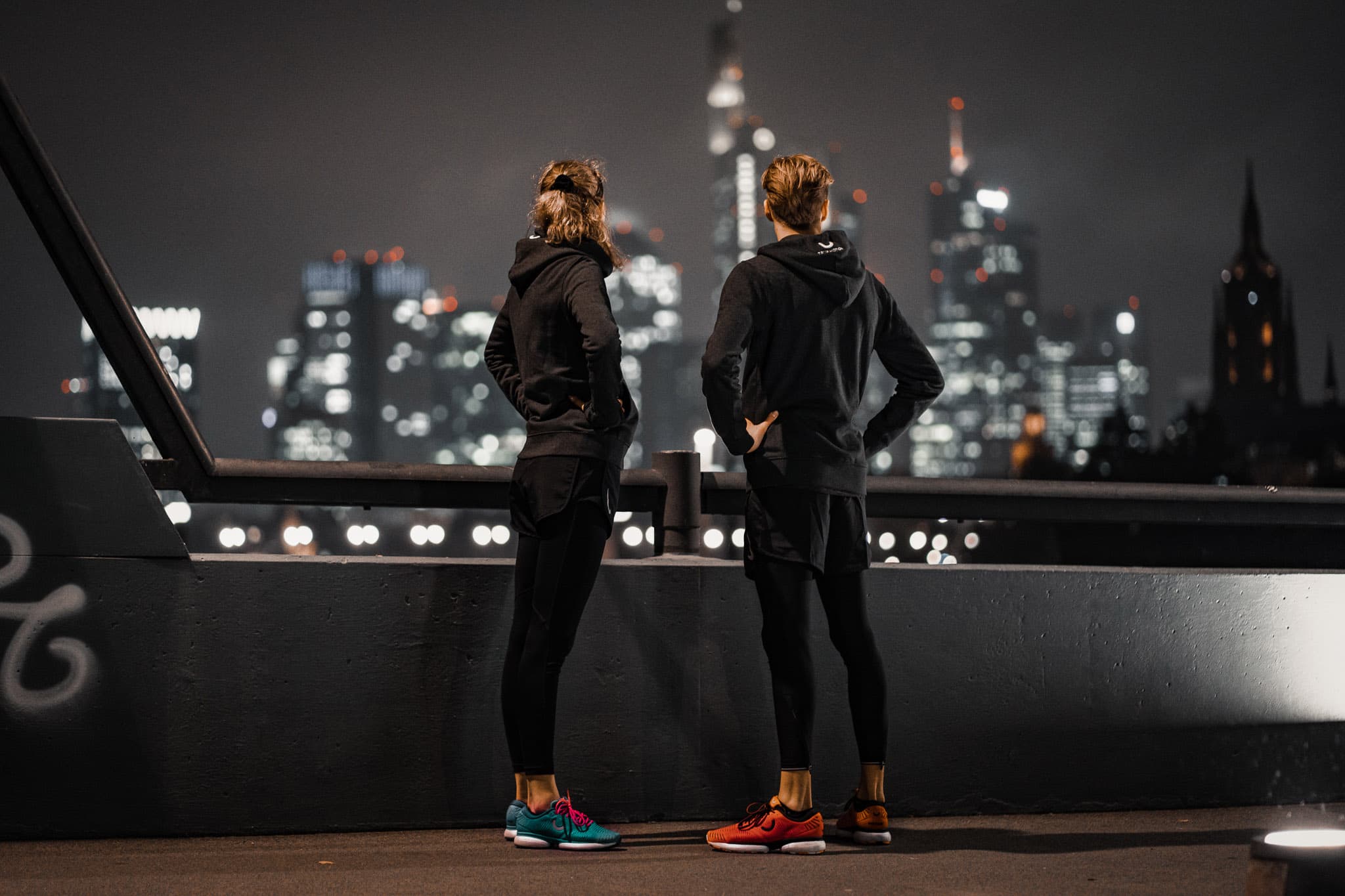
In the dark, having a light source on our body also provides additional, external safety. Drivers and cyclists simply see well-lit runners earlier. To be seen not only from the front, but also from behind, a red rear light helps. This is similar to a bicycle tail light, but is tied around the chest or around the head together with the headlamp. Another advantage is that animals see runners in time – and don’t get scared when they run past them.
Tip 4: Run in a group
In the dark, it’s a smart idea to run in a group. If we meet up for a running session, this strengthens motivation – after all, we don’t want to let our running partners down. On the other hand, a running group also provides a greater feeling of safety.
"In a group, we can draw each other’s attention to obstacles or help each other if something happens and we trip over a root, for example, and twist our ankle," says Eva Hirschhäuser. In addition, a group is more visible to other road users than individual runners.
Tip 5: Choose the right route
Anyone who goes for a run in the dark should be well prepared. "It’s best for runners to plan their route before they get started," says Eva Hirschhäuser. Not only is it important that the route is illuminated where possible – but also that we already know it well. It is not advisable to pick lonely, dark forest route at night.
"In the dark, it’s best to run on a route that we already know in daylight," the expert recommends. Then we know all its pitfalls like potholes, gravel, roots, or sudden inclines. This reduces the risk of tripping and injuring ourselves in poor lighting conditions.
Tip 6: Run with foresight
Anyone who goes for a run in the dark should run with foresight. Even if we know the route and light our way with a headlamp, we can miss small obstacles in the dark. However, with the right running technique, we can protect ourselves well against falling, explains Eva Hirschhäuser.
"We run more safely if we take shorter steps and keep our body’s center of gravity centered above the ground," she says. "In addition, it helps if we strike with the full length of our foot." This way, we increase stability and improve our balance if we ever step on unexpected obstacles.
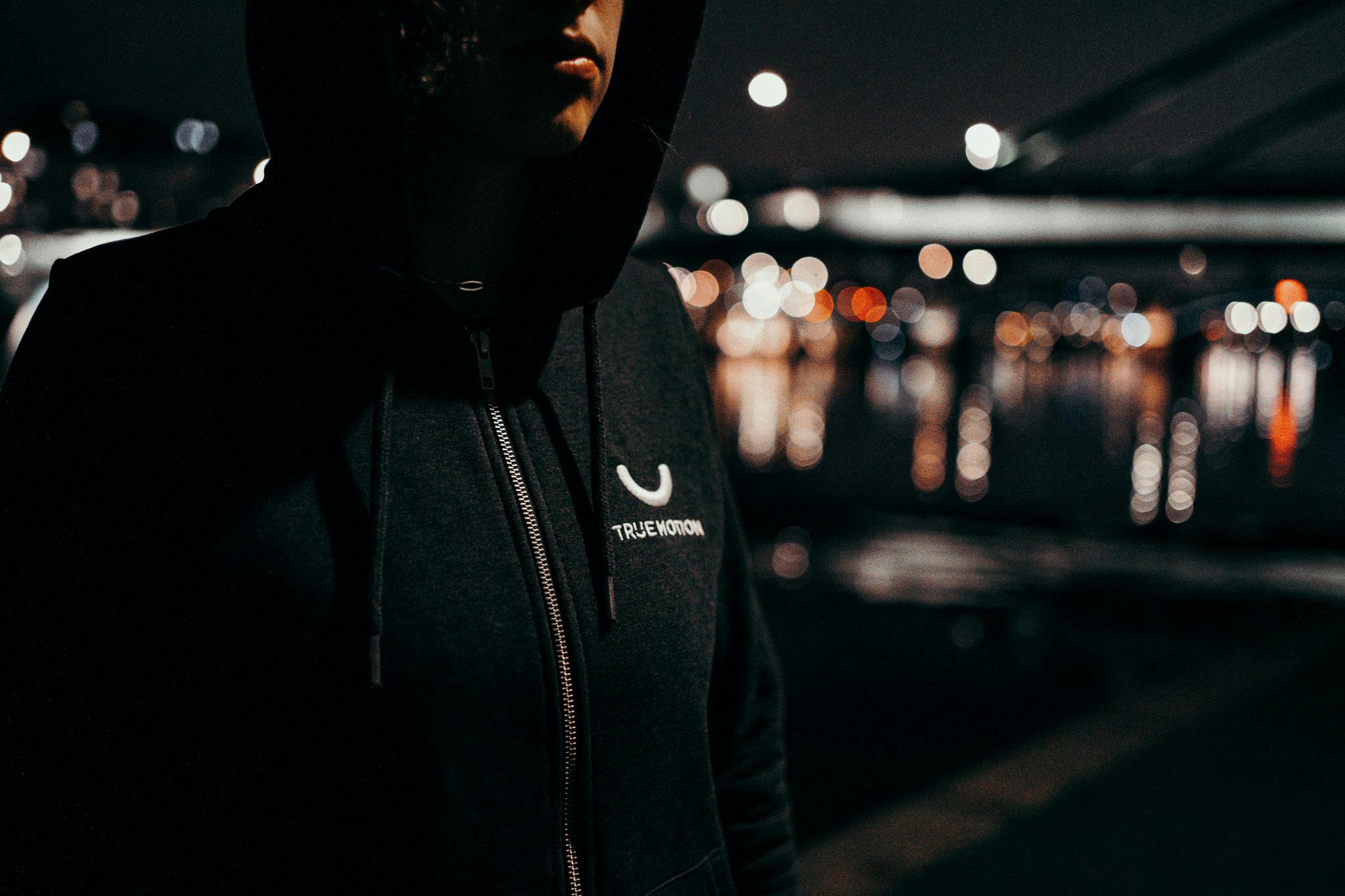
Our running pace also has a critical impact on our safety in the dark. If we don’t know the terrain well or have very poor visibility, we should eliminate tempo runs from our training program. In general, however, this does not mean that we cannot train faster runs in the evening hours.
"Especially in the winter, it is often unavoidable to run in the dark," says Eva Hirschhäuser. "However, interval runs should then only take place on very well-lit routes."
Tip 7: Bring your cell phone for once
Many runners prefer to leave their cell phones at home during training. There’s a reason for this – most of the time, it interferes with our running motion – especially when we’re holding it in our hands while running. However, if we go for a run in the dark, it can be quite useful to take the cell phone with us.
“Especially if we go out running alone and something does happen, we need to draw attention to ourselves,“ says Eva Hirschhäuser. On a dark, lonely route, this is often difficult. “But if we have our cell phone with us, we can call for help if something unexpected happens.“
To make sure our cell phone doesn’t bother us while we’re running, we should put it into the pocket of our pants or jacket. If we hold it in our hand instead, it can lead to an inefficient arm swing. Running then gets more exhausting – and we may lose our appetite for a workout in the dark.

NEVER RUN OUT OF
NEWS
Discover all True Motion stories – and be the first to hear about new products, promotions and events. Simply, center your run!
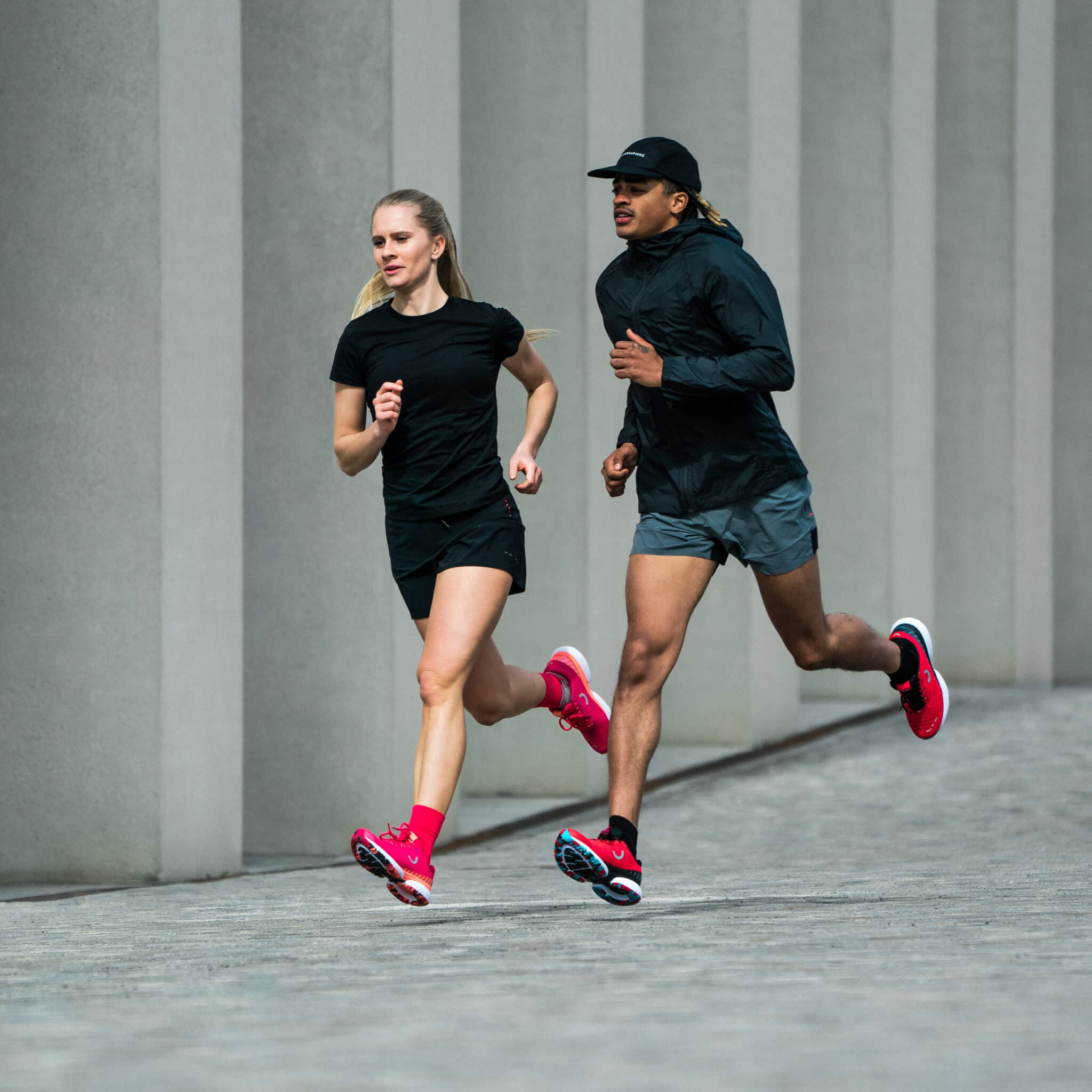
NEVER RUN OUT OF
NEWS
Discover all True Motion stories – and be the first to hear about new products, promotions and events. Simply, center your run!
READ THE NEWEST
U-RUN STORIES
Sabrina Mockenhaupt: This shoe got me running again
2025-10-31

Sabrina Mockenhaupt has achieved everything that many runners dream of. Running was and is her life, until the pain eventually became too much. Today, she is running pain-free again – this is her story.
Laura Schmidt: I have rediscovered running for myself
2025-03-07

My name is Laura. I started running eight years ago – to clear my head after work. But knee pain kept me from being able to run regularly. A new pair of running shoes was finally the solution. Today I run pain-free. This is my true runner story.
READ THE NEWEST
U-RUN STORIES
Sabrina Mockenhaupt: This shoe got me running again
2025-10-31

Sabrina Mockenhaupt has achieved everything that many runners dream of. Running was and is her life, until the pain eventually became too much. Today, she is running pain-free again – this is her story.
Laura Schmidt: I have rediscovered running for myself
2025-03-07

My name is Laura. I started running eight years ago – to clear my head after work. But knee pain kept me from being able to run regularly. A new pair of running shoes was finally the solution. Today I run pain-free. This is my true runner story.
RECOMMENDED BY








RECOMMENDED BY








GET 10 % OFF YOUR FIRST ORDER!
Get your personal running updates with exclusive discounts, product news, training plans and tips for healthy running - straight to your inbox. 10% discount on your next order.
SERVICE
ABOUT US
© 2025 True Motion Running GmbH

